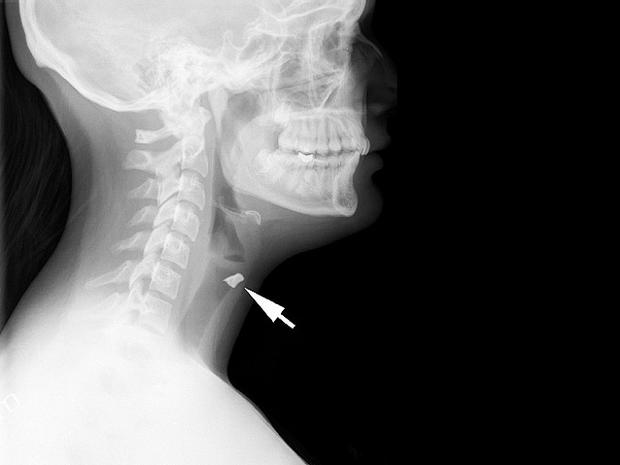Why are teens embedding objects in their bodies? (PICTURES)
(CBS) Some troubled teens find it hard to keep things from getting under their skin - literally.
Doctors say a surprising number of depressed or anxious adolescents are ramming needles, staples, paper clips, and other objects into their bodies - a practice doctors bloodlessly call "self-embedding behavior."
PICTURES Shocking X-rays: Troubled teens' embedded objects
Why would someone do something so creepy?
"Adolescence can be extremely stressful," Dr William E. Shiels, chief of radiology at Nationwide Children's Hospital in Columbus, Ohio and the author of a new study on self-embedding behavior in the journal "Pediatrics," told CBS News. "Children tell us that the physical pain is easier to deal with than emotional pain. And self-embedding behavior distracts them from the emotional pain."
Shiels, a pioneer in the use of surgical techniques to remove embedded objects, said an astonishing one in four teens engages in some form of self-injury - whether kids choose to self-embed or to cut or burn or otherwise injure themselves. That's one in four of all teens, and not just those who have been physically or sexually abused or diagnosed with bipolar disorder, an anxiety disorder, borderline personality disorder, or another psychological disorder.
If self-injury is disturbing to think about, it's also dangerous. In addition to causing infections, Shiels said self-embedding behavior can injure a nerve or blood vessel. That could trigger bleeding or even a stroke, Shiels said.
Not surprisingly, teens tend not to think about those dangers.
"If you give some of these kids a magazine, you'll get it back with the staples removed," Shiels explained. "Give them a pencil, and they will take the lead out and jam it into their skin.
Self-embedders often respond well to psychotherapy and/or drug therapy. But first their behavior has to be observed. Shiels says parents and teachers should consider self-embedding behavior in troubled teens who have an unexplained sore or skin infection - or who seem to be trying to hide their arms, legs, or wrists, perhaps by wearing long-sleeved shirts and long pants even in hot weather.
Is a child you care about trying to hide something?

